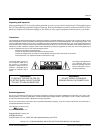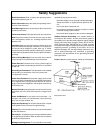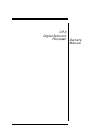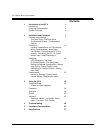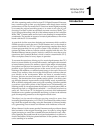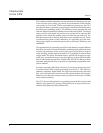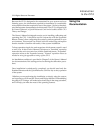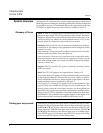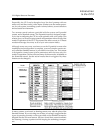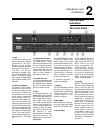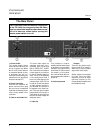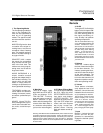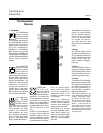
1
Introduction
to the CP-3
CP-3 Digital Surround Processor
Introduction
1
All of the operating modes of the Lexicon CP-3 Digital Surround Processor
have a common goal: to draw you, the listener, more deeply into a musical
performance or a film. For music the CP-3 uses true stereo digital processing
to recreate the original recording space or to create a new one of your
choosing. For films it offers an extremely accurate version of Dolby
®
Pro
Logic Surround decoding with all of the enhancements of the LucasFilm
Home THX
®
Cinema system and Lexicon's own decoding for monaural film
soundtracks. The increase in impact of a musical performance or film when
heard with the CP-3 is incredible.
A great deal of effort went into designing an instrument which would be
flexible enough to satisfy the most critical listeners and yet be simple to
operate. Essentially, the CP-3 is a signal processing computer that can be
custom-programmed for any specific system. Once installed, it can be
operated by either of the two remote controls supplied with the unit. The
Standard Remote features simple, intuitive controls for most day-to-day
operations; the Expanded Remote, which is used to customize the CP-3,
allows complete control of every aspect of operation.
To recreate the experience of being at a live musical performance the CP-3
draws on recent studies of concert-hall acoustics, and applies this research
to home listening rooms. Our auditory sense is quite adept at interpreting
clues about our physical environment. Even with your eyes closed, it is
possible to get a good mental picture of the room or hall you are in by
listening to the ambience, or reflected sound energy, in the room. We are not
aware of our auditory sense in everyday life because it confirms what our
eyes identify as the environment. When we listen to recorded music,
however, there are no visual clues and we rely completely on our sense of
hearing. The introduction of two-speaker stereo systems over thirty years
ago brought dramatic improvement to high fidelity music reproduction.
With a carefully-designed system, and good recording, it became possible
to produce a good sonic picture of the original event. Unfortunately, our
listening rooms do not approximate the acoustics of a good concert hall, an
intimate jazz club, or a magnificent cathedral — our ears tell us where we
really are. The Lexicon CP-3 is designed to overcome this fundamental
limitation to two-speaker reproduction and bring us closer to the ultimate
goal of transporting ourselves to the original musical event.
The object is to increase the sideways-moving sound in a room, thus
increasing Spatial Impression, or SI. The CP-3 increases SI by either extract-
ing it from the original recording, using the Panorama or Surround modes,
or by generating a new acoustic environment with Ambience or Reverb.
When a listener is in the correct spot the Panorama mode provides an almost
ideal recreation of the original recording space. It works by using digital
signal processing to cancel the crosstalk between the listener’s ears, effec-
tively spreading the sound from the two front loudspeakers in a wide arc in
front of the listener. With the optional addition of rear speakers, Panorama
can be startling in its realism.
Introduction
to the CP-3




